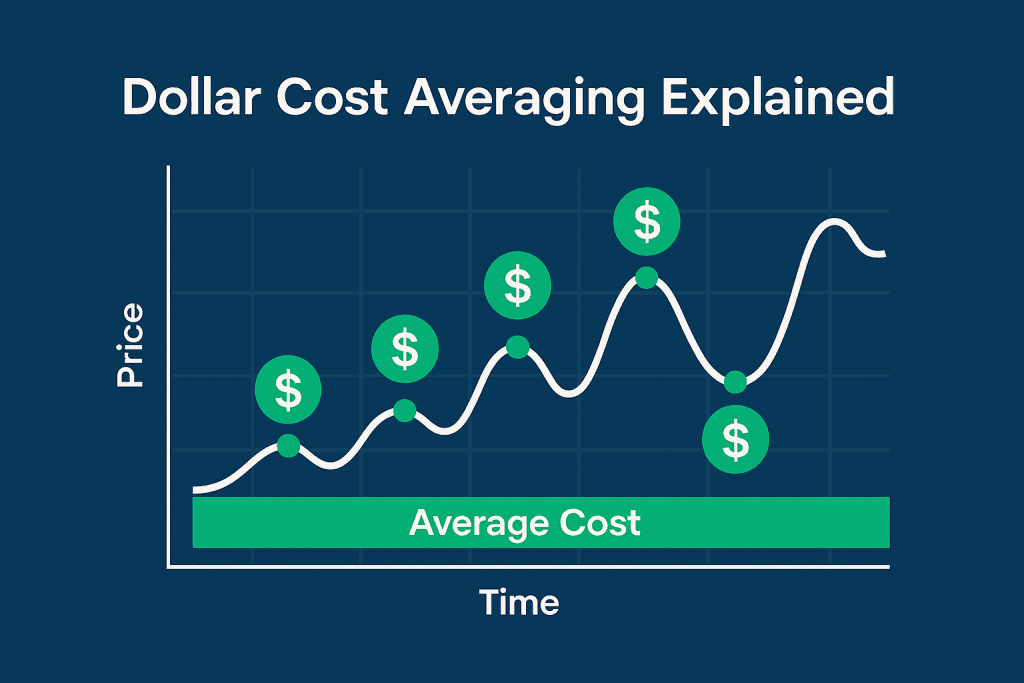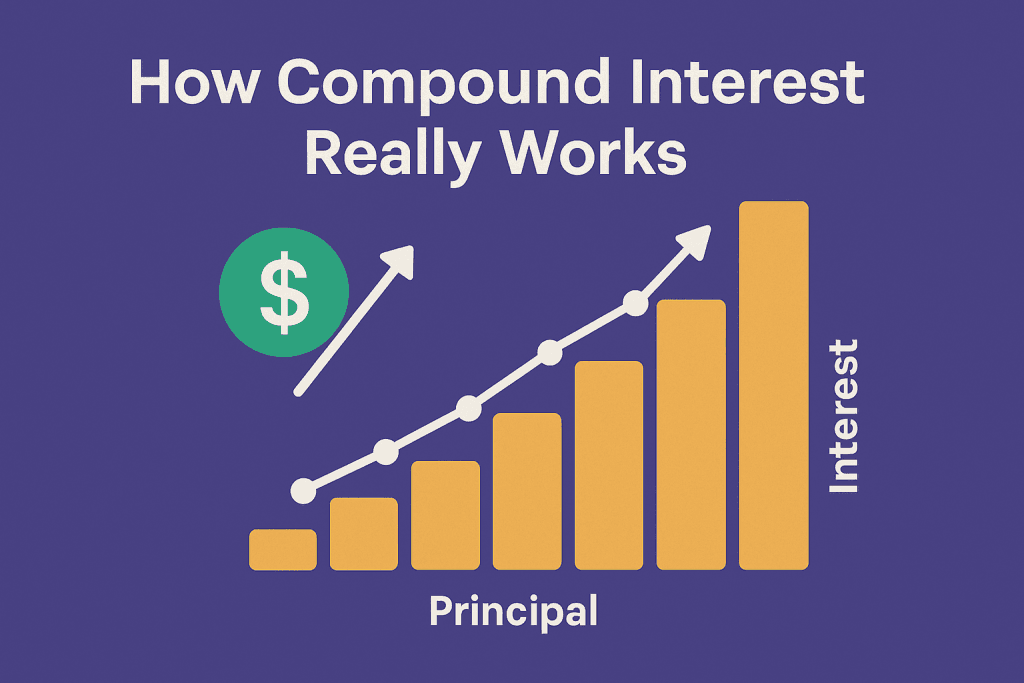In the ever-evolving world of cryptocurrency and traditional finance, Dollar Cost Averaging Explained has become a must-know strategy for anyone seeking to manage risk and achieve long-term investment goals. It has gained significant traction, especially among new investors navigating volatile markets like digital assets or emerging blockchain technologies.
When people ask questions like “Did Binance Officially List Pi Network? (2025 Update),” they often have deeper concerns about timing the market. Dollar cost averaging, or DCA, provides an alternative to those trying to time entries and exits.

What Is Dollar Cost Averaging?
At its core, Dollar Cost Averaging Explained refers to a method where an investor divides the total amount they want to invest across periodic purchases of a target asset. Instead of investing a lump sum at one price, they spread out their investment at regular intervals, regardless of the asset’s price. This means they may buy more units when the price is low and fewer when the price is high.
This strategy doesn’t rely on speculation or emotion. Instead, it follows a consistent schedule, helping reduce the impact of volatility and removing the stress of market timing. While many investors panic during corrections or market spikes, DCA remains neutral and disciplined.
see more: how compound interest really works
Why Investors Use Dollar Cost Averaging
Investors often face emotional barriers. Fear of loss, greed for gains, and uncertainty about events such as “Did Binance Officially List Pi Network? (2025 Update)” lead to decision paralysis. DCA removes the need to “get it right” in one move.
Using this approach, people:
Avoid investing a large amount just before a market drop
Reduce regret tied to short-term price movements
Build a long-term habit of investing regularly
Protect themselves from the high volatility typical in cryptocurrencies and tech stocks
This makes Dollar Cost Averaging Explained especially popular among beginners and cautious investors.
Comparing Dollar Cost Averaging to Lump Sum Investing
To grasp the benefits of Dollar Cost Averaging Explained, it’s helpful to compare it with lump sum investing. When you invest a lump sum, you allocate the entire capital all at once. This can lead to high gains if the timing is right—but also devastating losses if markets crash soon after.
DCA, in contrast, spreads this risk. Even if markets dip, only a portion of your capital is exposed at any given time. This mitigates risk and smoothens out entry points, particularly in uncertain environments where questions like “Did Binance Officially List Pi Network? (2025 Update)” reflect broader market ambiguity.
Dollar Cost Averaging in the Crypto Market
Cryptocurrency markets are volatile. News, regulations, exchange listings, and rumors like “Did Binance Officially List Pi Network? (2025 Update)” can cause dramatic price fluctuations. For this reason, DCA is an effective approach for crypto investors.
Investing weekly or monthly in coins like Bitcoin, Ethereum, or even newer projects ensures that your average cost reflects both the highs and the dips. You aren’t overexposed during speculative spikes, nor are you left behind if prices gradually rise over time.

Dollar Cost Averaging with Stocks and ETFs
Outside of crypto, Dollar Cost Averaging Explained applies well to traditional markets too. Stocks and index funds like the S&P 500 or NASDAQ also fluctuate. DCA into these instruments can lower the psychological pressure of catching the “perfect” entry.
Investors who fear recessions, global conflicts, or economic uncertainty (similar to those watching for a “Did Binance Officially List Pi Network? (2025 Update)” announcement) benefit from slow and steady investing.
It becomes more about discipline and less about prediction.
Psychological Benefits of Dollar Cost Averaging
When you use a consistent investing strategy like DCA, it becomes easier to avoid emotional missteps. FOMO (fear of missing out) and panic selling are major threats to investor success. Headlines about pump-and-dump schemes or fake news surrounding topics such as “Did Binance Officially List Pi Network? (2025 Update)” can lead to irrational decisions.
DCA anchors your behavior. You invest based on schedule, not sentiment.
Additionally:
You reduce the urge to time the market
You build patience and confidence over time
You learn to ignore market noise and focus on your plan
This mental stability compounds over the years just like your assets do.
How to Implement Dollar Cost Averaging
Understanding Dollar Cost Averaging Explained is the first step. Applying it consistently is next. Here’s how:
Choose your asset – Decide whether to invest in crypto, stocks, ETFs, or other instruments.
Set your amount – Define how much you can invest regularly (weekly, biweekly, monthly).
Pick your schedule – Be consistent. Avoid skipping or timing your buys.
Automate – Use tools or exchanges that allow automatic investments.
Ignore short-term trends – Whether it’s a dip, pump, or news about “Did Binance Officially List Pi Network? (2025 Update),” stick to your strategy.
Most importantly, don’t adjust your plan based on temporary noise. DCA is about discipline, not reaction.
Real Examples of Dollar Cost Averaging
Suppose you invest $100 every Monday into Bitcoin. Over a year, you would have invested $5,200. Your entry prices would have varied: some buys when BTC was $25,000, some at $35,000, and maybe even $45,000. But your average buy price would reflect the entire year’s activity—not just a single point.
Now, compare that to someone who put $5,200 in one day. If they bought at a peak, they’d have to wait for recovery. With DCA, even if crypto prices are influenced by speculative discussions like “Did Binance Officially List Pi Network? (2025 Update),” you still stay protected by spreading out entries.
Advantages of Dollar Cost Averaging
Here are the main benefits outlined clearly:
Risk reduction: Spread your exposure over time
Lower volatility impact: Smooths your average entry point
Discipline: Reinforces good financial habits
Emotion control: Less reactive to short-term price movement
Flexibility: Can be applied to almost any asset class
All of these are especially critical in markets prone to misinformation, speculation, or pump tactics—like those seen around “Did Binance Officially List Pi Network? (2025 Update).”
Disadvantages to Consider
While Dollar Cost Averaging Explained highlights many strengths, it’s not a flawless method:
Slower capital deployment: May miss big rallies
Lower short-term returns: Especially in strong bull markets
Requires consistency: Skipping contributions reduces effectiveness
May feel boring: Lacks excitement or momentum trades
Still, for most investors, especially those concerned with risk management and not market timing, these trade-offs are acceptable.

Common Misconceptions About Dollar Cost Averaging
People often confuse DCA with buying every dip or trading based on headlines. That’s not the case.
True DCA means:
You invest at fixed intervals
You stick to it whether the market is up or down
You don’t react to news—whether it’s inflation reports or rumors like “Did Binance Officially List Pi Network? (2025 Update)”
Another myth is that DCA is only for beginners. In reality, experienced investors use DCA to manage larger portfolios and maintain psychological discipline.
Tools to Help You Use Dollar Cost Averaging
Modern platforms support automated strategies. Whether you’re using traditional brokerages, fintech apps, or crypto exchanges, look for features like:
Auto-invest
Recurring buys
Portfolio tracking
Performance insights
Some platforms even allow custom scheduling—weekly, biweekly, or monthly. These features keep you consistent, even when FUD (fear, uncertainty, and doubt) floods the market with false signals like “Did Binance Officially List Pi Network? (2025 Update).”
Dollar Cost Averaging vs. Value Averaging
Some investors explore alternatives to DCA, such as value averaging. In value averaging, you adjust your investment amount based on performance to meet a predetermined portfolio growth path.
While this can offer higher returns in theory, it adds complexity and emotional temptation. DCA, by contrast, stays simple, consistent, and protective—qualities especially helpful in emotionally charged markets.
When to Use Dollar Cost Averaging
DCA is suitable when:
You’re entering a volatile asset class
You’re unsure of current market valuations
You want to build a position gradually
You’re investing long-term
If you’re uncertain about broader questions like “Did Binance Officially List Pi Network? (2025 Update)” and how they might impact your portfolio, DCA provides structure amidst chaos.
Dollar Cost Averaging for Retirement Investing
One of the most common applications of DCA is in retirement accounts. Investors contribute regularly to 401(k)s, IRAs, or similar plans. This builds wealth over decades, regardless of short-term market events.
DCA aligns perfectly with payroll deductions, monthly budgeting, and long-term financial goals. Whether or not a coin is listed on Binance, your path remains steady.
Final Thoughts
Dollar Cost Averaging Explained is not just a technique. It’s a mindset of consistency, patience, and long-term vision. In a world where investors are constantly bombarded with uncertainty—especially rumors and speculation like “Did Binance Officially List Pi Network? (2025 Update)”—DCA offers peace.
Rather than guessing when to invest, you build your position step by step. You avoid the trap of fear, greed, and regret.
By embracing this strategy, you give yourself the chance to grow with the market—not race it. And for those who stay the course, this often proves to be the most powerful move of all.

